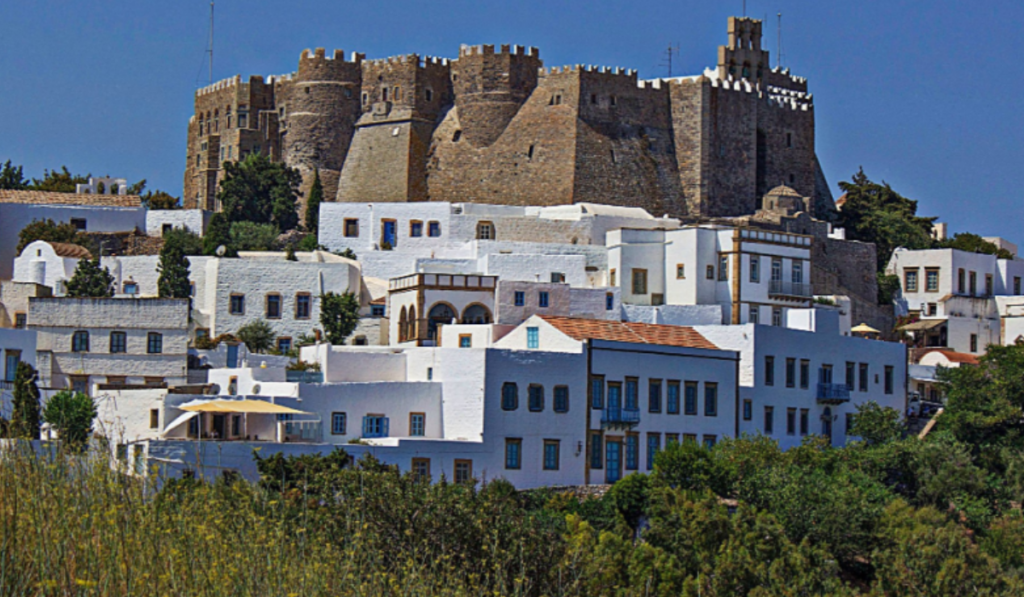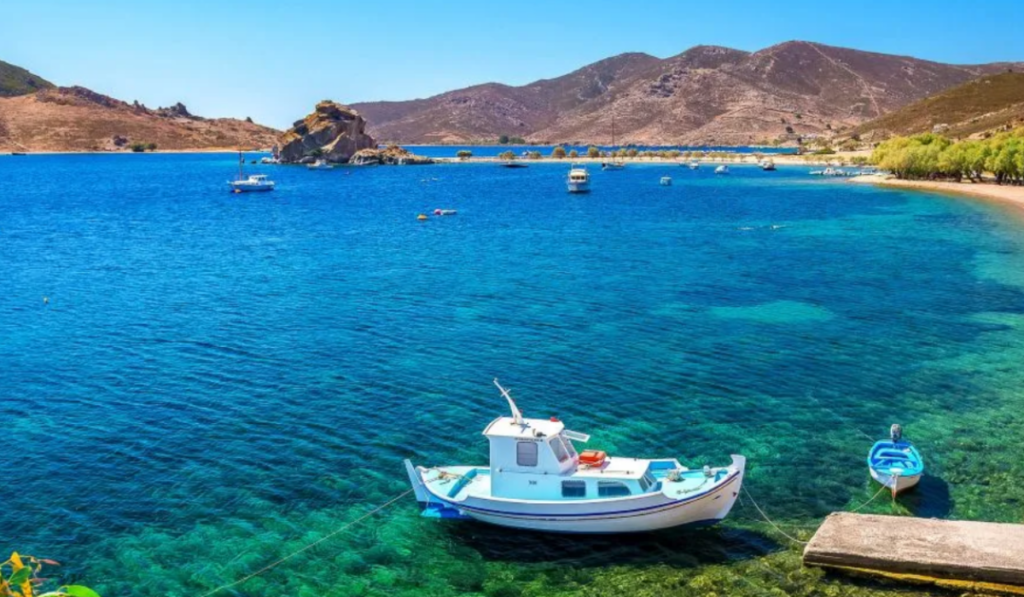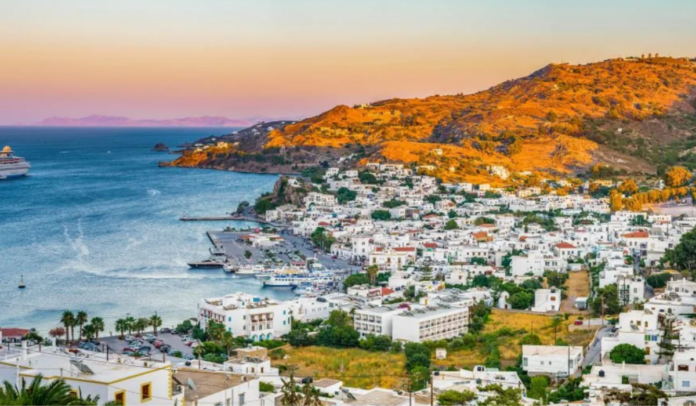Located in the Aegean Sea, Patmos is more than just a beautiful Greek island.
Centuries ago, Saint John found himself here, exiled and alone. In a cave, now known as the Cave of the Apocalypse, he had visions of the end times. These visions inspired him to write the Book of Revelation, the last book of the Bible.
Today, visitors can explore this sacred cave, nestled within the Greek Orthodox chapel of St. Anne. Inside, a silver miter marks where Saint John rested his head, and a fissure in the rock symbolizes the Holy Trinity.
But Patmos isn’t just about the past. It’s a place of beauty and creativity, attracting artists and seekers from around the world.
In Patmos, the line between the ordinary and the divine blurs, inviting contemplation and reflection on the mysteries of life. Here, at the edge of the world, the story of Saint John and his visions continues to inspire awe and wonder.
Life in Patmos

High above the cavern where Saint John received his revelations, two monks still reside in cells atop the rugged cliffs of Patmos. But the island’s spiritual heart lies in the grand monastery of St. John, a majestic fortress dominating the landscape.
Founded in 1088 by the revered Greek monk St. Christodoulos, the monastery preserves ancient structures dating back to the 11th century. Within its walls, visitors can marvel at the original fortifications, the rustic kitchen, and the humble cells. However, it is the church of St. John that truly commands attention, adorned with magnificent frescoes that narrate tales of faith and devotion.
While the church stands as proof of Patmos’s religious heritage, the monastery’s museum and library elevate its significance even further. Among its prized possessions is the original “golden bull” bestowed by Byzantine Emperor Alexios I Komnenos, granting Christodoulos sovereignty over the island.
Additionally, a firman issued by Sultan Mehmed the Conqueror in 1454 underscores the monastery’s autonomy, with historical documents bearing witness to its enduring legacy.
The library, hailed as one of Greece’s most significant outside of Mount Athos, houses a treasure trove of 1,200 manuscripts, including ancient leaves of Mark’s gospel dating back to the 6th century. Here, history whispers through the parchment and vellum, offering a glimpse into the island’s rich past.
Yet, according to Panagos Evgenikos, leader of the island’s council, Patmos’s allure extends beyond its religious sites. As he aptly noted during a visit in 2018, the island’s charm lies in its pristine beaches and the captivating beauty of Chora, its capital. Indeed, Patmos beckons not only to the faithful but also to those seeking solace in its sun-kissed shores and picturesque villages.
Patmos Beaches

Lambi’s shoreline boasts an array of petite, multicolored pebbles, spanning hues from butterscotch orange to sweet potato red and egg yolk yellow – the combined effect is truly mesmerizing.
Then there’s Petra, a sandy stretch of land connected to the standalone rock of Kallikatsou. Legend has it that the rock formed from a young girl cursed by her mother for swimming here immediately after Holy Communion, against strict orders.
Another gem is the charming fishing village of Grikos, gazing across at the petite island of Tragonissi, providing natural protection to a serene, sandy beach. Tucked away in the northern reaches of Greece’s Dodecanese archipelago, Patmos lacks an airport and isn’t the easiest destination to access. However, its serene ambiance draws VIPs from across the globe – the likes of Aga Khan, David Bowie, and Giorgio Armani have all frequented its shores over the years.
In fact, some have chosen to make Patmos their permanent abode, contributing to the island’s development.
Nicholas Negroponte from MIT’s Media Lab, for instance, spearheaded the installation of an island-wide Wi-Fi network, offering free internet access to all residents and visitors.
Another enthusiast, financier Charles Pictet, meticulously restored three windmills atop a hill overlooking the monastery. One of these windmills is fully operational, producing high-quality wholemeal flour.
Swiss politician Josef Zisyadis harbored even grander visions – collaborating with French winemaker Dorian Amar, he initiated vine cultivation across 20 acres near Petra beach.
Back in 2018, Amar proudly presented an Assyrtiko white and a Mavrothiriko red, sporting the playful label “Domaine de l’Apocalypse.”
“At the time, Amar remarked, “The soil is fertile, water is abundant, but the terroir isn’t ideal for vine cultivation. The wind and sunlight are plentiful, but shade is lacking.”
“I’ve been planting trees to lower the temperature and improve the production – an oak here, a few carob trees there – give me a few years, and I’ll have turned this patch into a paradise.”
Many argue that Patmos is already a paradise due to its secluded nature, but is there a possibility of an airport being constructed in the future?
Getting to Patmos
Getting to Patmos is pretty straightforward – the simplest route is by ferry, which typically takes around two to three hours. You can catch the ferry from Kos, which boasts an international airport.


